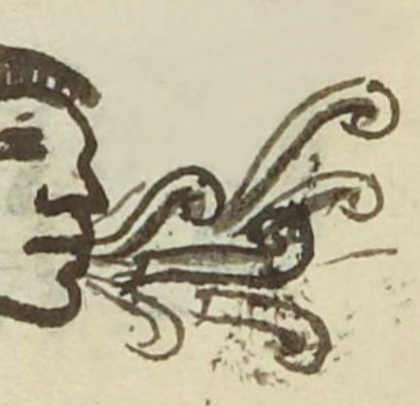Tlatol (MH614r)
This black-line drawing of the simplex glyph for the personal name Tlatol ("Word") is attested here as a man's name. The glyph is built onto the face of the tribute payer who has this name, so we have captured his face. This way, one can see the six speech scrolls emerge from his mouth, all but one curling under. A few of the scrolls have a thick dark line on their underside, which seems to be a stylistic characteristic of this tlacuilo (scribe).
Stephanie Wood
Speech scrolls that come out of a human mouth (also, for instance, from an eagle's beak) can represent a range of vocabulary, including: tlatolli (word), itoa (to speak), tzatzi (to announce), motenehua (aforementioned), nahuatl (language, or a pleasant sound), chalani (to speak a lot), and cuica (to sing). This list is not exhaustive.
It is interesting that "word" is represented as oral rather than alphabetic or hieroglyphic. Oral communication was paramount in Nahua culture.
Stephanie Wood
toribio tlatol
Toribio Tlatol
Stephanie Wood
1560
Jeff Haskett-Wood
nombres de hombres

tlatol(li), speech, words, https://nahuatl.wired-humanities.org/content/tlatolli
Matrícula de Huexotzinco, folio 614r, World Digital Library, https://www.loc.gov/resource/gdcwdl.wdl_15282/?sp=310&st=image.
This manuscript is hosted by the Library of Congress and the World Digital Library; used here with the Creative Commons, “Attribution-NonCommercial-ShareAlike 3.0 License” (CC-BY-NC-SAq 3.0).







